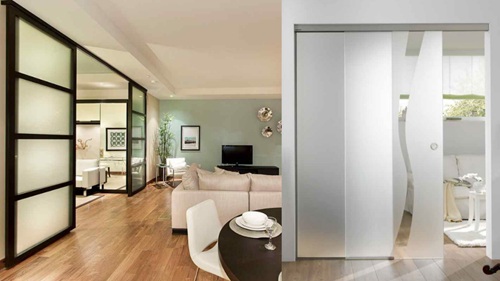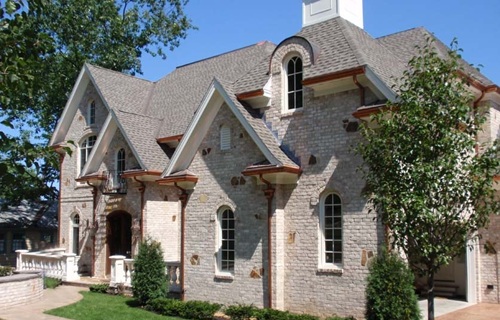In modern interior design, flexibility and natural light are prized elements. As homes and offices evolve to embrace open-plan concepts, there’s an increasing demand for versatile solutions that preserve openness while providing the option for privacy and space segmentation. One such solution gaining popularity is the sliding glass door as a room divider.
A sliding glass door offers a contemporary and elegant way to divide living spaces without sacrificing light or visual connection. Whether used between a living room and dining room, a home office and bedroom, or even within commercial spaces, this design feature can dramatically transform interiors. But like any architectural choice, it comes with both benefits and limitations.
In this article, we explore the pros and cons of using sliding glass doors as room dividers to help you decide if they’re the right fit for your space.
What Is a Sliding Glass Door Room Divider?

A sliding glass door room divider is a set of framed or frameless glass panels that move along a track system to open and close spaces within a room or between rooms. These dividers can be:
- Clear, frosted, or tinted for varying levels of privacy
- Single-track or multi-track, allowing multiple panels to stack or slide
- Made with tempered, laminated, or acoustic glass for added strength or noise control
Common in modern homes, lofts, and office interiors, these dividers provide both functional and aesthetic value.
Pros of Sliding Glass Doors as Room Dividers
1. Enhanced Natural Light
One of the most notable advantages of glass doors is their ability to allow natural light to flow freely between divided spaces. This is especially beneficial in areas where you want to maintain brightness throughout, such as between a kitchen and a living room or within a home office.
2. Sleek and Modern Aesthetic
Sliding glass doors offer a clean, minimalist look that complements contemporary interior styles. Whether framed in black metal for an industrial vibe or frameless for a seamless appearance, they act as both a functional and decorative element.
3. Space-Saving Design
Unlike traditional hinged doors that require swing clearance, sliding glass doors move along a track, making them ideal for tight or narrow spaces. This is useful in small apartments, studios, or compact office layouts where maximizing floor space is essential.
4. Flexibility and Functionality
Sliding glass doors give users the option to open up or close off spaces depending on the need. Want an open flow for entertaining? Slide the panels open. Need privacy or separation? Close them instantly. This versatility is a major plus for multi-functional living spaces.
5. Acoustic Control (with Specialized Glass)
High-quality sliding glass doors made with acoustic or laminated glass can help reduce noise transmission between rooms. This makes them especially useful in work-from-home setups or shared spaces where sound insulation is important.
6. Customizable Options
Sliding glass doors are available in a wide range of finishes, styles, and glass types. Whether you want full transparency, partial privacy with frosted panels, or a decorative etching for style, customization options allow you to tailor the design to your specific taste and needs.
Cons of Sliding Glass Doors as Room Dividers
1. Limited Privacy
Despite their visual appeal, sliding glass doors—especially those with clear glass—offer minimal privacy. Conversations, activities, and visual cues are often still noticeable. While frosted or tinted glass can help, it won’t match the full privacy of solid partitions or walls.
2. Sound Leakage
Unless made from special acoustic glass, most standard sliding glass doors do not fully block sound between rooms. This may be problematic in homes with children, busy workspaces, or areas requiring confidentiality or quietness.
3. Fingerprints and Smudges
Glass panels are prone to fingerprints, dust, and smudges, especially in high-traffic areas or homes with pets and children. Regular cleaning is necessary to maintain their sleek appearance, which can be a downside for some homeowners.
4. High Installation Costs
Sliding glass doors as room dividers can be more expensive to install than simpler partition solutions like curtains, folding doors, or drywall. Customization, high-quality materials, and track systems can drive up costs, especially for large or specialized installations.
5. Track Maintenance
Over time, the sliding mechanism can become noisy, misaligned, or clogged with debris, especially if not maintained properly. Track systems require periodic cleaning and, in some cases, adjustments or repairs to function smoothly.
6. Safety Concerns with Glass
Although most sliding doors use tempered or laminated safety glass, there’s always a slight risk of impact damage or shattering, particularly in homes with active children or pets. Frosted or laminated versions offer more protection and are recommended for safety-conscious buyers.
Best Use Cases for Sliding Glass Door Room Dividers
Sliding glass doors work especially well in:
- Open-concept homes where space division is needed without losing light
- Home offices needing part-time separation from living areas
- Studio apartments where compact solutions are essential
- Commercial interiors for conference rooms, executive offices, or collaborative zones
- Bathrooms and closets in luxury or minimalist design schemes
Tips for Choosing the Right Sliding Glass Divider
- Choose the right glass: Frosted for privacy, acoustic for soundproofing, and tempered for safety.
- Invest in quality hardware: A smooth, reliable track system makes a huge difference.
- Consider cleaning needs: Choose low-maintenance finishes if daily cleaning isn’t practical.
- Hire a professional installer: Precise measurement and installation are key to functionality and aesthetics.
Conclusion
A sliding glass door as a room divider is a stylish and smart solution for anyone looking to maximize light, enhance flexibility, and modernize interior spaces. While they offer a number of benefits—such as elegance, space-saving, and customization—they also come with some drawbacks, particularly in terms of privacy, sound insulation, and maintenance.
If your priorities include openness, aesthetic appeal, and functional design, and you’re willing to invest in quality materials and upkeep, then sliding glass door dividers can be a valuable addition to your home or office. As with any design choice, understanding the pros and cons ensures the solution aligns with both your lifestyle and practical needs.

